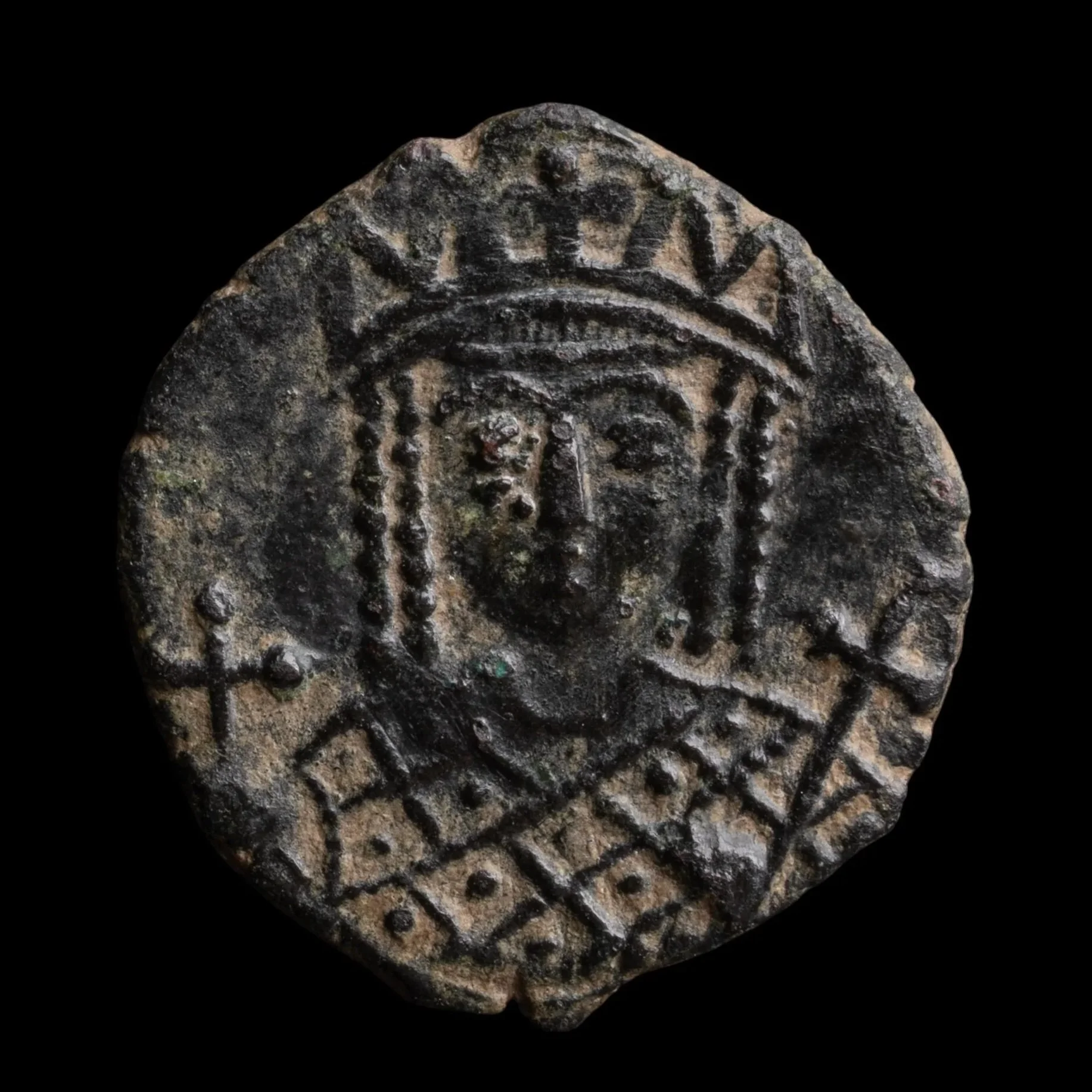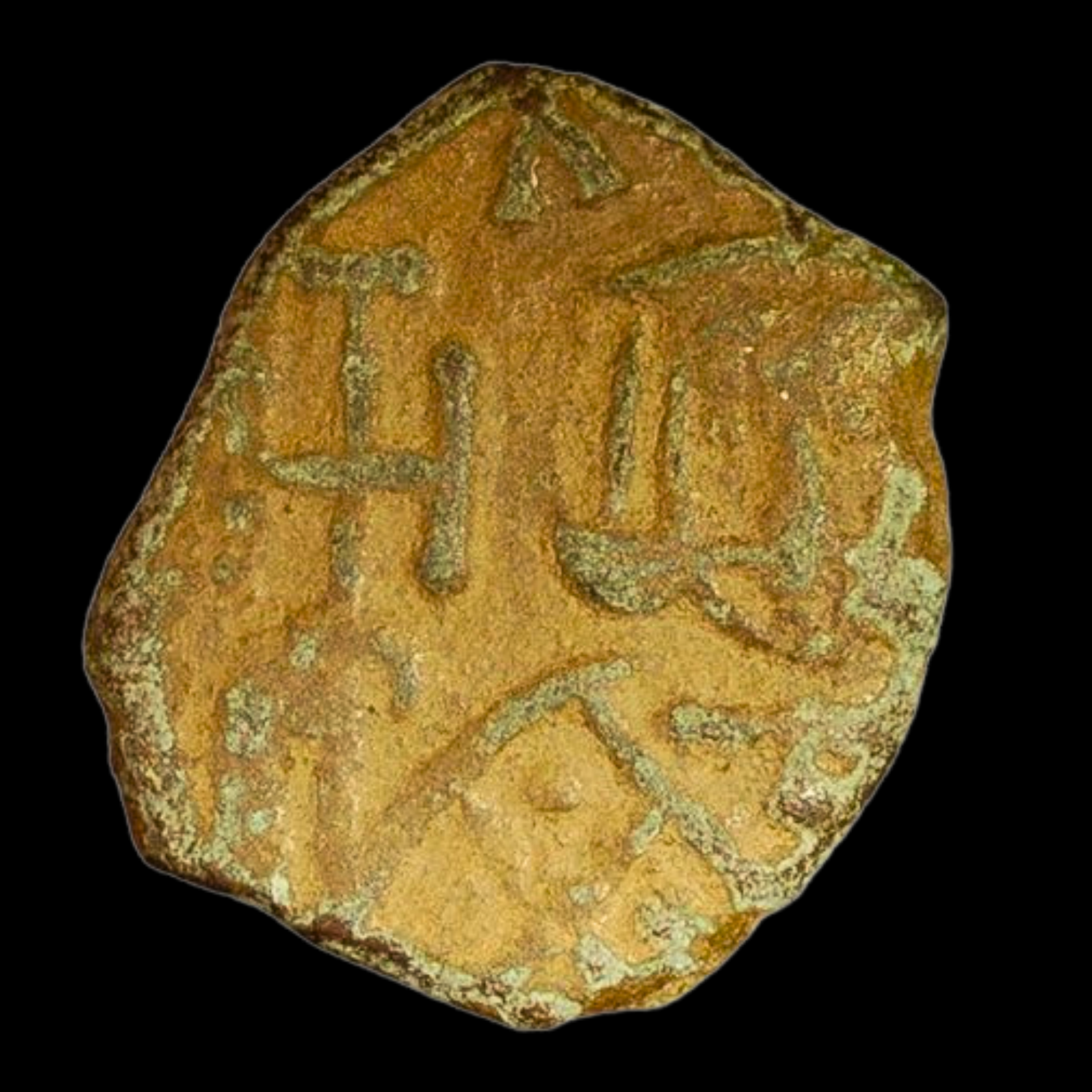 Image 1 of 2
Image 1 of 2

 Image 2 of 2
Image 2 of 2



Ancient Bronze Follis from Constantinople: Constantine VI & Empress Irene – Mother-Son Co-Rule (about 1,230 years ago)
Struck between AD 780 and 797 in the imperial mint at Constantinople (modern-day Istanbul, Türkiye), this bronze follis bears the paired authority of the youthful Emperor Constantine VI and his formidable mother, Empress Irene. Issued during Byzantium’s turbulent post-Iconoclast era, the coin showcases the empire’s return to figural imagery after decades of religious controversy. By placing both rulers on separate sides, the design proclaims their joint sovereignty while subtly foreshadowing Irene’s eventual seizure of sole power. The facing-bust portraits typify late-8th-century Byzantine artistry—stylised yet unmistakably regal.
Front side (Obverse):
Crowned, facing bust of Constantine VI wearing a loros (ceremonial scarf)
Holds a globus cruciger (orb topped with cross), symbolising Christ-given authority
Large, staring eyes and stiff drapery—hallmarks of Byzantine frontal portraiture
Youthful features contrast with earlier mature, bearded emperors, underscoring his minority under Irene’s regency
Back side (Reverse):
Crowned, facing bust of Empress Irene in imperial loros
Also grasps a globus cruciger, asserting equal legitimacy
Slightly broader facial features and elaborate coiffure signal her senior status
Rare standalone depiction of a reigning Byzantine empress—an iconographic breakthrough for female rule
Technical Details
Composition: Copper-alloy bronze with dark olive-brown patina
Denomination & Size: AE Follis, 19 mm diameter; Weight: 2.41 g
Mint & Date: Constantinople, AD 780–797
References: Sear Byzantine ® 1593; DOC III 5; BMC Byzantine 1
Certification: Not yet professionally graded; pleasing detail and clear legends
Historical Significance
This follis captures a pivotal moment when the Byzantine throne was shared, at least nominally, between mother and son. Irene’s decision to restore icon veneration (affirmed at the Seventh Ecumenical Council in 787) ended the first wave of Iconoclasm and set artistic production, including coin portraiture, roaring back to life. Coins like this broadcast the restored power of sacred imagery across the empire’s trade networks, from the Aegean to the Black Sea. Collectors prize the type not only for its aesthetic charm but for its testimony to one of history’s rare female autocrats and to Byzantium’s resilience in faith, politics, and art.
Struck between AD 780 and 797 in the imperial mint at Constantinople (modern-day Istanbul, Türkiye), this bronze follis bears the paired authority of the youthful Emperor Constantine VI and his formidable mother, Empress Irene. Issued during Byzantium’s turbulent post-Iconoclast era, the coin showcases the empire’s return to figural imagery after decades of religious controversy. By placing both rulers on separate sides, the design proclaims their joint sovereignty while subtly foreshadowing Irene’s eventual seizure of sole power. The facing-bust portraits typify late-8th-century Byzantine artistry—stylised yet unmistakably regal.
Front side (Obverse):
Crowned, facing bust of Constantine VI wearing a loros (ceremonial scarf)
Holds a globus cruciger (orb topped with cross), symbolising Christ-given authority
Large, staring eyes and stiff drapery—hallmarks of Byzantine frontal portraiture
Youthful features contrast with earlier mature, bearded emperors, underscoring his minority under Irene’s regency
Back side (Reverse):
Crowned, facing bust of Empress Irene in imperial loros
Also grasps a globus cruciger, asserting equal legitimacy
Slightly broader facial features and elaborate coiffure signal her senior status
Rare standalone depiction of a reigning Byzantine empress—an iconographic breakthrough for female rule
Technical Details
Composition: Copper-alloy bronze with dark olive-brown patina
Denomination & Size: AE Follis, 19 mm diameter; Weight: 2.41 g
Mint & Date: Constantinople, AD 780–797
References: Sear Byzantine ® 1593; DOC III 5; BMC Byzantine 1
Certification: Not yet professionally graded; pleasing detail and clear legends
Historical Significance
This follis captures a pivotal moment when the Byzantine throne was shared, at least nominally, between mother and son. Irene’s decision to restore icon veneration (affirmed at the Seventh Ecumenical Council in 787) ended the first wave of Iconoclasm and set artistic production, including coin portraiture, roaring back to life. Coins like this broadcast the restored power of sacred imagery across the empire’s trade networks, from the Aegean to the Black Sea. Collectors prize the type not only for its aesthetic charm but for its testimony to one of history’s rare female autocrats and to Byzantium’s resilience in faith, politics, and art.











